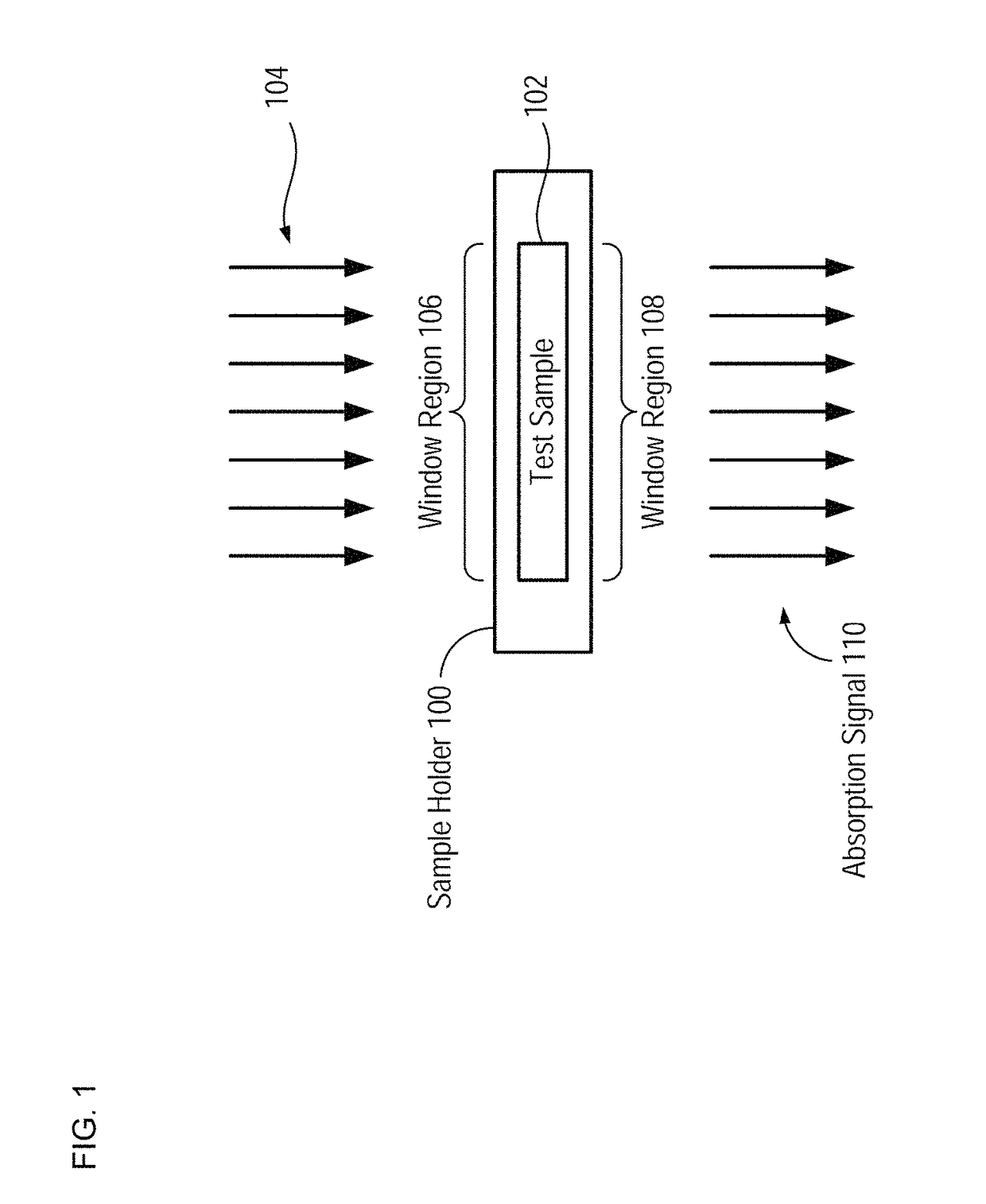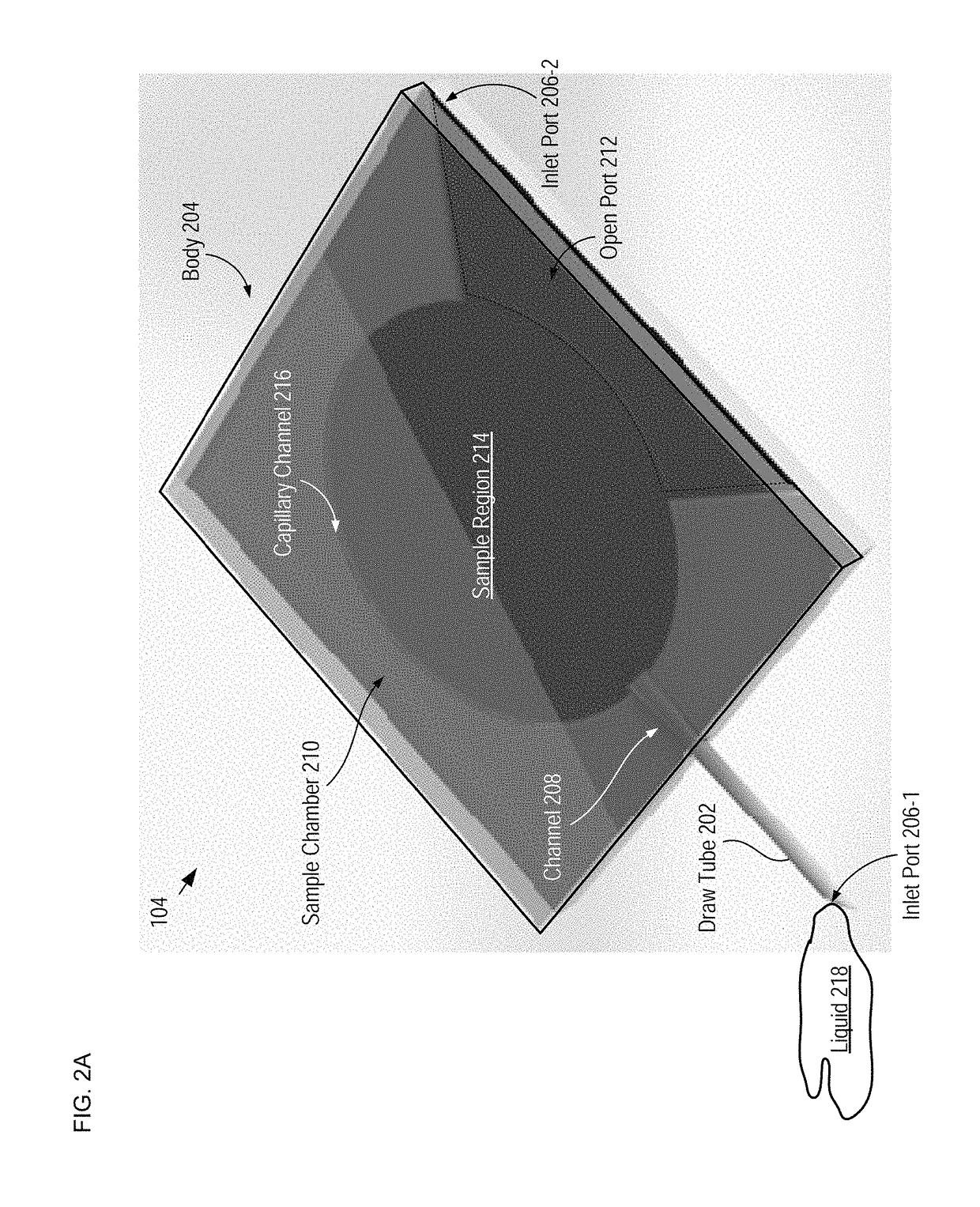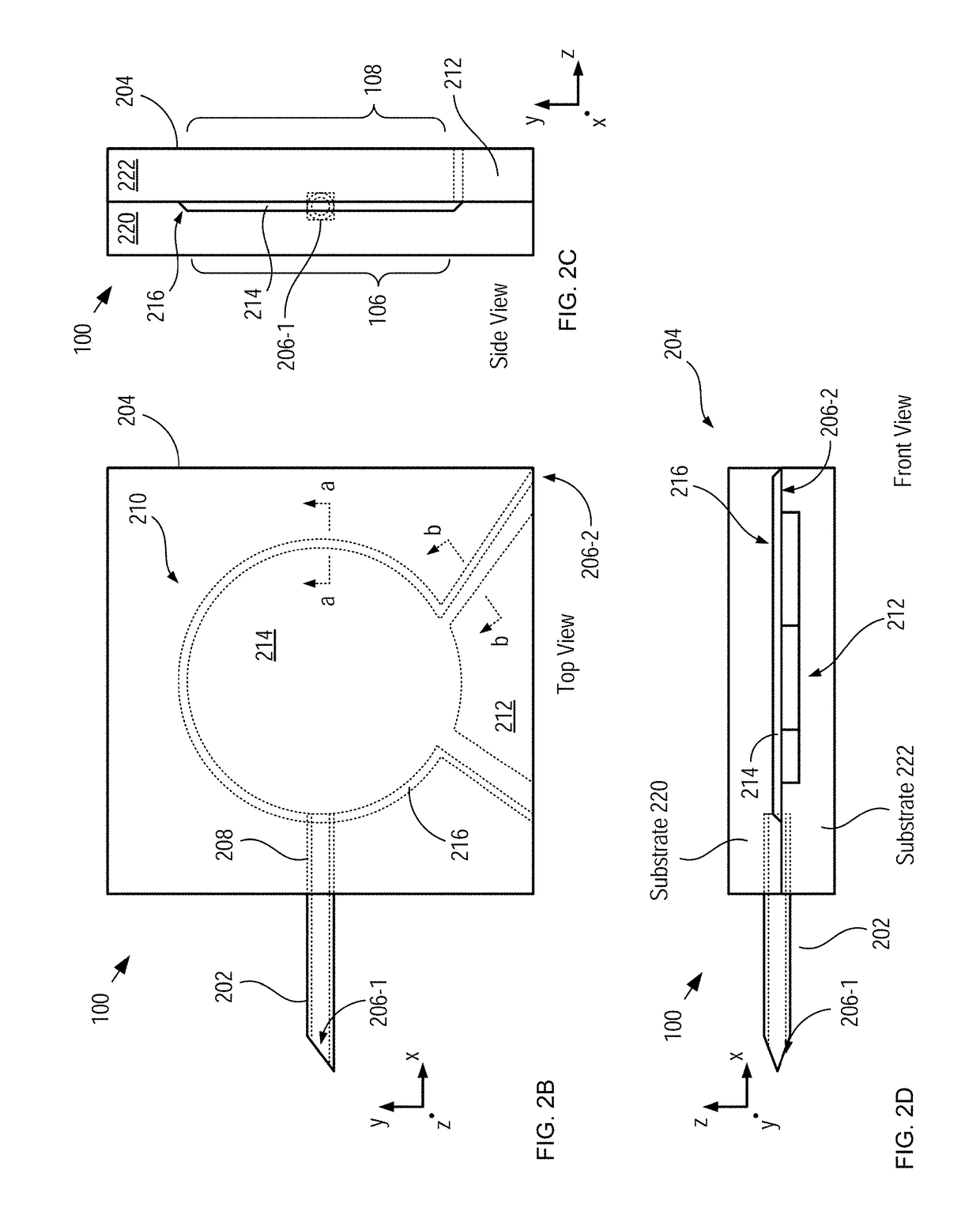Apparatus for drawing of a bodily fluid and method therefor
a bodily fluid and apparatus technology, applied in the field of analytical chemistry technology, can solve the problems of significant patient distress, blood leakage under the skin to give rise to hematoma, and difficulty in collecting bodily fluids in sufficient volumes for reliable testing
- Summary
- Abstract
- Description
- Claims
- Application Information
AI Technical Summary
Benefits of technology
Problems solved by technology
Method used
Image
Examples
Embodiment Construction
[0038]The following terms are defined for use in this Specification, including the appended claims:[0039]“Mid-infrared radiation” (MIR) is defined as electromagnetic radiation having a wavelength within the range of approximately 2.5 microns to approximately 12.5 microns.[0040]“Transmissive” is defined as having a transmission of at least 45%. For example, an element that is transmissive for mid-infrared radiation transmits at least 45% of any light signal having a wavelength within the range of approximately 2.5 microns to approximately 12.5 microns.
[0041]FIG. 1 depicts a schematic drawing of a sample holder in accordance with an illustrative embodiment of the present invention. Sample holder 100 is “microcuvette” operative for holding a minute volume of a liquid test sample. Sample holder 100 enables spectroscopic analysis of test sample 102 using mid-infrared radiation (i.e., radiation 104).
[0042]As discussed in U.S. Pat. No. 8,344,323, which is incorporated herein by reference, ...
PUM
 Login to View More
Login to View More Abstract
Description
Claims
Application Information
 Login to View More
Login to View More - R&D
- Intellectual Property
- Life Sciences
- Materials
- Tech Scout
- Unparalleled Data Quality
- Higher Quality Content
- 60% Fewer Hallucinations
Browse by: Latest US Patents, China's latest patents, Technical Efficacy Thesaurus, Application Domain, Technology Topic, Popular Technical Reports.
© 2025 PatSnap. All rights reserved.Legal|Privacy policy|Modern Slavery Act Transparency Statement|Sitemap|About US| Contact US: help@patsnap.com



